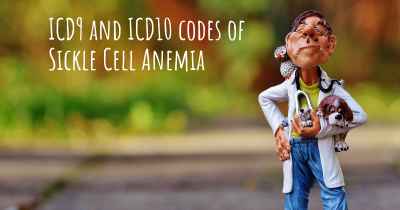Which are the symptoms of Sickle Cell Anemia?
See the worst symptoms of affected by Sickle Cell Anemia here

Symptoms of Sickle Cell Anemia
Sickle Cell Anemia (SCA) is a genetic blood disorder that affects the shape and function of red blood cells. It is characterized by the presence of abnormal hemoglobin, a protein responsible for carrying oxygen throughout the body. The altered hemoglobin causes red blood cells to become rigid and assume a sickle or crescent shape, leading to various complications.
1. Pain Crises
Pain crises, also known as vaso-occlusive crises, are one of the hallmark symptoms of sickle cell anemia. These episodes occur when sickle-shaped red blood cells block blood flow through the small blood vessels, causing severe pain. The pain can occur in any part of the body, but it most commonly affects the bones, joints, chest, and abdomen. Pain crises can last for hours to days and may require hospitalization for adequate pain management.
2. Anemia
Anemia is a common symptom of sickle cell anemia. The abnormal shape of red blood cells makes them fragile and prone to rupture, leading to a decreased number of healthy red blood cells in circulation. Anemia can cause fatigue, weakness, pale skin, shortness of breath, and dizziness.
3. Infections
Individuals with sickle cell anemia have a weakened immune system, making them more susceptible to infections. The abnormal red blood cells can impair the spleen's ability to filter out certain bacteria, increasing the risk of bacterial infections, particularly in young children. Common infections include pneumonia, urinary tract infections, and meningitis.
4. Delayed Growth and Development
Sickle cell anemia can affect the growth and development of children. The reduced oxygen supply to various organs and tissues can impair their normal functioning, leading to delayed growth and development milestones. Children with sickle cell anemia may have delayed puberty and shorter stature compared to their peers.
5. Organ Damage
Over time, the repeated episodes of blocked blood flow and reduced oxygen supply can cause organ damage. The organs most commonly affected include the spleen, liver, kidneys, lungs, and bones. Organ damage can lead to complications such as splenic sequestration (sudden enlargement of the spleen), acute chest syndrome (a condition similar to pneumonia), pulmonary hypertension, gallstones, and avascular necrosis of the joints.
6. Stroke
Stroke is a severe complication of sickle cell anemia, particularly in children. The abnormal red blood cells can block blood vessels in the brain, leading to reduced blood flow and oxygen supply. This can result in a stroke, causing neurological symptoms such as sudden weakness or numbness of the face, arm, or leg, difficulty speaking, and vision problems.
7. Eye Problems
Sickle cell anemia can affect the blood vessels in the eyes, leading to various eye problems. These may include retinopathy (damage to the retina), retinal detachment, and vision loss. Regular eye examinations are important for individuals with sickle cell anemia to detect and manage any eye-related complications.
8. Priapism
Priapism is a painful and prolonged erection that can occur in males with sickle cell anemia. It happens due to the blockage of blood vessels in the penis, preventing normal blood flow. Priapism requires immediate medical attention to prevent long-term complications.
It is important to note that the severity and frequency of symptoms can vary among individuals with sickle cell anemia. Some individuals may experience mild symptoms, while others may have more frequent and severe complications. Early diagnosis, regular medical care, and appropriate management can help improve the quality of life for individuals living with sickle cell anemia.








